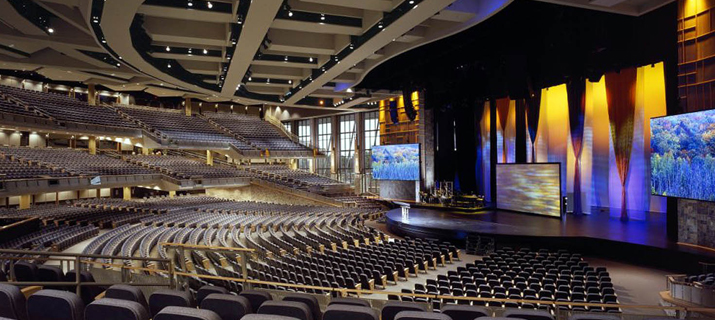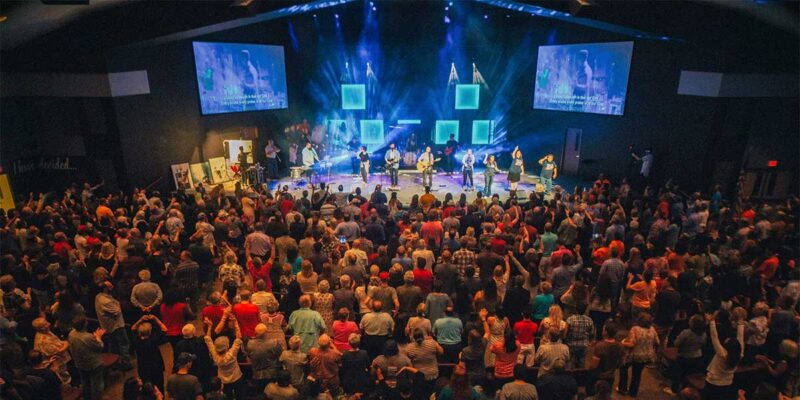Fewer Large Installations — More Frequent Small Iterations
 I used to make my living as a consultant focused on the large building programs of churches investing millions of dollars at a time. It was not difficult to allocate 10 percent to 15 percent of a $20 million dollar budget on audio, video and lighting and make a very comfortable living. Many of my peers and those who have come after me still chase these big projects, but I saw a change back in 2007 that I have followed until now (as of this writing, 2015): the day of the 2,000+ seat auditorium is probably coming to an end. It shifted my focus and my business and I’m confident it will do the same for you, too.
I used to make my living as a consultant focused on the large building programs of churches investing millions of dollars at a time. It was not difficult to allocate 10 percent to 15 percent of a $20 million dollar budget on audio, video and lighting and make a very comfortable living. Many of my peers and those who have come after me still chase these big projects, but I saw a change back in 2007 that I have followed until now (as of this writing, 2015): the day of the 2,000+ seat auditorium is probably coming to an end. It shifted my focus and my business and I’m confident it will do the same for you, too.
Interesting, the shift in the house of worship market has not been a decrease in the number of churches adding in technology — quite the opposite — but what’s changed has been the size of the venues and the frequency with which they are built or renovated. This trend has led me to prognosticate a future of fewer large A/V/L installations and more frequent, smaller installations done in nearly continuous iterations.
Mega-Sized Church Venues Out
The upside of massive venues is the number of people that can attend and volunteer at one time. Logistically, the upside is that it’s potentially easier to get people to attend and serve for a few hours on Sunday than it is to have them spread out their time to accommodate multiple services. However, the downsides of huge venues are numerous: they cost more to build, require a larger on-site staff to facilitate services, and are difficult to use efficiently for most other gatherings due to their enormous size and the tremendous cost of heating and cooling. They sit empty the vast majority of the time.
In these large venues, there’s a tipping point where the technology has to take an exponential leap in performance, flexibility — and price — to accommodate the difficulties of a very large venue. And that’s just for the hardware. Consider, too, the higher demands upon the staff and volunteers, and these complex systems require professional-level training and experience to operate — and the staffing costs to do so increase right along with the system. Though the overall cost of technology has decreased somewhat, the sheer volume of technology required in a huge space more than tips the scale towards the higher end of the building-to-technology budget ratio.
I’m not saying it’s wrong to build a mega-sized venue. What I am saying is that there are less compelling reasons to do so than ever before, at least here in the United States.
 Repurposed Spaces In
Repurposed Spaces In
The trend of using medium to mid-sized venues (500 attendance to about 750) has spiked due to the lower costs to build and maintain, the fewer staff and volunteers needed to facilitate events and the opportunity to repurpose the space for other events that are not swallowed up by the enormity of a mega venue. For most mega churches, couples looking to get married often have to find a wedding chapel elsewhere since the main venue is simply too large and expensive to use. Likewise, the footprint necessary for the main venue often limits the amount of facility space that can be allocated towards smaller meeting spaces for other ministry events. Unless the church already has a massive campus, the larger the venue the less flexible space available.
From a technology standpoint, the shift to these “less big” (they’re not exactly small at 500 to 750 seats) venues provides both a lower cost of entry and a simplification of operation. Add in some basic automation and even a non-technical staff person can use presets to host small group meetings without the need for trained A/V/L personnel – something not possible in a mega venue.
Beyond the initial purchases are the iterative purchases that allow for future growth and flexibility as the venues purposes shift and change with the needs of the church. In this model, a friendly relationship of church-to-vendor is reciprocated by the vendor-to-church solutions over time. Of course, this leads to the opportunity for more frequent maintenance contracts (cheaper than full-time technical staff) and a dependable schedule for replacing consumables, which will be used more often since the venues are available for more than weekend services.
Multi-site and Portable Church
Perhaps the most obvious representatives of the trend away from mega-sized church venues are the explosion in growth of multi-site churches and portable churches.
Multi-site has been the biggest trend of the church market. The most recent data by Leadership Network revealed over 5,000 multisite churches in the United States — and that was back in 2012. The very nature of the multi-site church has been to put more local venues to make it easier for people to attend not only on the weekend, but to be involved with opportunities throughout the week; something that is a limitation of mega-sized venues which typically see people drive less than 20 minutes to attend an event during a weekday.
The proximity effect of a local campus is a huge draw, and with the resources of a large church behind them, these satellite campuses represent a significant opportunity for selling and installing duplicate (or at least similar) systems time and again.
Likewise, the portable church market is a system integrator’s dream: pre-designed, zero-engineering required per project, as one sale. This is the epitome of simple selling. The opportunity to not only provide ready-to-go packages, but the documentation, color-coded connectivity, and pre-determined cable runs is a huge win-win scenario for the church and the integrator.
Both represent a rise in the medium to mid-sized church venue and a shift away from mega-sized church auditoriums and building programs. I see the next evolution of this including purchasing and revitalizing older churches that have dwindled in attendance or incorporating these congregations into the the life of the growing churches.
What say you? Does the shift away from mega-size church venues herald a new era of technology solutions for your company to provide to churches?





